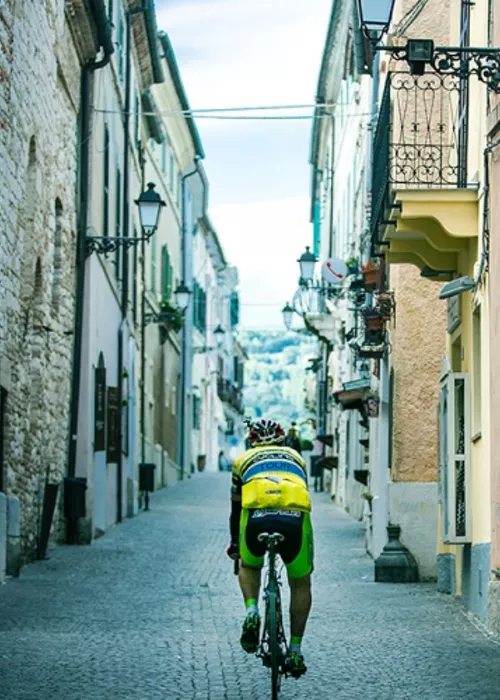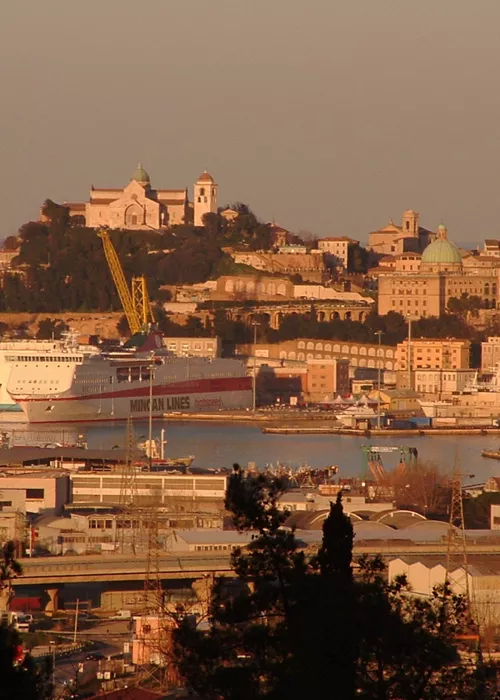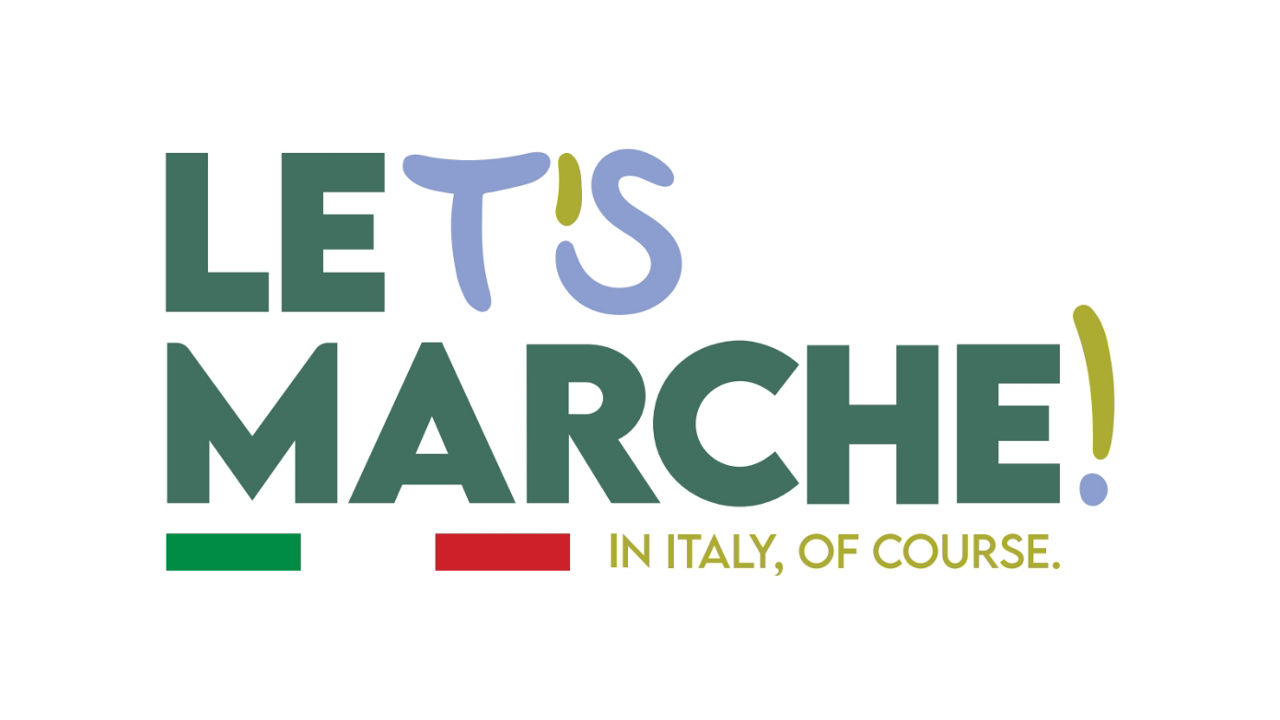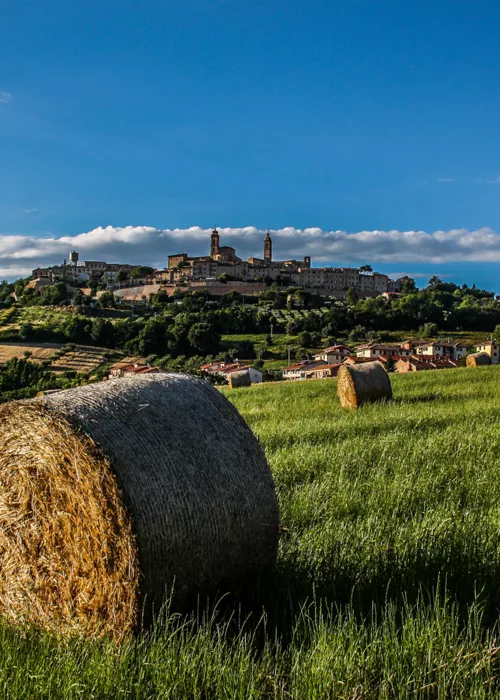Serra San Quirico, recipient of an Orange Flag from the Touring Club Italiano

Observed from a distance, Serra San Quirico looks like a ship nestled on a hill. Its medieval urban fabric has remained practically intact, and a walk through the village is a step back into a bygone time as you stroll up and down its cobbled streets or into the shade of the so-called "copertelle" (covered passages and arcades next to the walls and overlooked by dwellings). But Serra San Quirico is also a treasure trove of some nice little jewels, such as the Baroque Church of Santa Lucia, part of the monumental complex of Santa Lucia, the former Convent of the Sylvestrines, which today houses the Marche Region Historical Map Collection, the Museo Premio Ermanno Casoli 1998-2007 (a contemporary art museum) and the Local Natural History Museum. These are followed by the central Piazza della Libertà, with its 16th-century fountain surrounded by the town's most important buildings, and the 14th-century tower known as the Torre del Cassero. Also worth a visit are the churches of San Filippo Neri, San Quirico e Giulitta, and San Francesco. The staples of the dinner table are Verdicchio DOC wine and "calcione", a traditional dessert with cheese, sugar and eggs. All around lies the greenery of the Regional Park of Gola della Rossa and Frasassi. A 10-minute drive from Serra San Quirico brings us to the Romanesque-Gothic Abbey of Sant'Elena.
Trekking in the Regional Park of Gola della Rossa and Frasassi

A protected area of woods teeming with biodiversity, hermitages and abbeys, gorges and ravines through which unfold over 35 trails of varying difficulty levels. One itinerary accessible to all (including people with reduced mobility or sensory impairments thanks to the presence of ramps, tactile maps, guide ropes and other aids) is the Sentino River Greenway. It starts from the small hamlet of San Vittore, where you can visit the Abbey of San Vittore delle Chiuse, the most important Romanesque monument in Le Marche. The Greenway is an educational trail about one kilometre long featuring panels with information about the flora and fauna of this wooded area that runs alongside the Sentino River. Also in San Vittore, you can test your balance, strength and courage by walking across wobbly suspension bridges or letting yourself be hauled up by vast pulleys at the Frasassi Avventura activity centre. The most popular trail – with good reason – is the one that leads to Valadier's Temple and the Hermitage of Santa Maria Infra Saxa. The route starts near the entrance to the Frasassi Caves and leads uphill for just under one kilometre. The surrounding backdrop is one of a kind, formed of lush vegetation and the steep walls of the Frasassi Gorge. Nestled in the cave, the Temple (commissioned by Leo XII and designed by Giuseppe Valadier) is octagonal with travertine walls and a dome, and it offers a truly spectacular view. On the opposite cliff face is the oratory of S. Maria Infra Saxa, an 11th-century hermitage.
The spectacular Frasassi Caves

A network of caves, tunnels and hallways rises to overlapping levels that connect through vertical shafts. Stalactites, stalagmites, columns and small lakes. These marvels are the Frasassi Caves, a very important speleological complex and one of the most appealing tourist destinations in Le Marche due to both its extent and the richness and beauty of its formations. The largest cave, called the Grotta Grande del Vento, was discovered in 1971 by a group of speleologists from Cai di Ancona. Then the caves were gradually prepared and opened to visitors three years later. The visit begins in the enormous Ancona abyss; the other hypogeums have imaginary names inspired by the images evoked by the concretions such as the Candle Room, the Grand Canyon, the Bear Room and the Infinity Room.
Genga, Orange Flag of the Italian Touring Club.

At the top of a hill in the upper Esino valley, Genga is immersed in the Gola della Rossa and Frasassi Regional Natural Park and is enclosed within the walls of the medieval castle. Certified for tourist-environmental quality with the Orange Flag of the Italian Touring Club, although small in size, it features several monuments of interest, such as the 'Art, History, Territory' museum at the Fiumi Sermattei palace. The town is also rich in traditional products and dishes, such as cured meats (especially the typical ciauscolo), crescia and vincisgrassi. From Genga, you can veer off to the hamlet of Pierosara, guardian of an ancient legend; or follow a path that reaches the Scappuccia Valley and its natural beauty.











?wid=500&hei=700&fit=vfit,1&fmt=webp)




